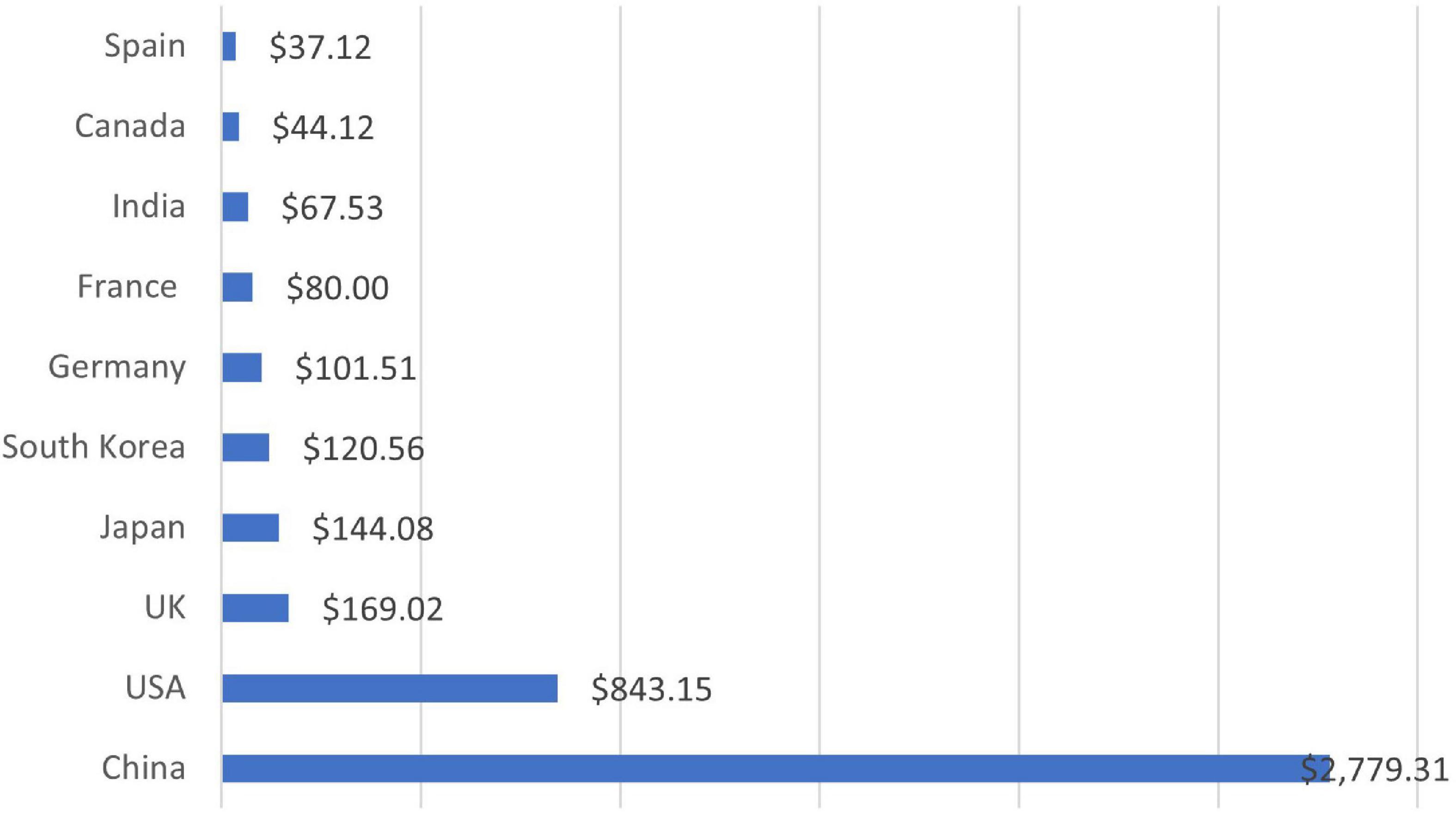E-commerce is booming. Online shopping is now a global norm.
But there’s a hidden challenge many don’t see: supply chain disruptions and rising costs. These issues are shaking the e-commerce world. Companies face delays and increased expenses. Why does this happen? Many factors play a role. Global events, like pandemics, disrupt the flow of goods.
Natural disasters and political tensions also have an impact. As a result, businesses struggle to keep up with demand. Costs rise, affecting both companies and consumers. This dark side of e-commerce is often overlooked. But it’s crucial to understand these challenges. They influence prices, delivery times, and product availability. Being aware helps consumers and businesses adapt and plan better. Let’s dive deeper into these issues. Understanding them is key to navigating the e-commerce landscape.
The eCommerce industry is booming, but behind the scenes, many online businesses struggle with rising costs, logistical nightmares, and fierce competition. While platforms like Amazon, Shopify, and TikTok Shop make selling easier than ever, hidden challenges are squeezing profit margins and forcing many merchants out of business.
Let’s break down the biggest challenges in eCommerce today—and what businesses can do to survive.
.jpeg)
Credit: www.earth-scan.com
Rising Operational Costs
E-commerce faces challenges as supply chain disruptions lead to rising operational costs. Businesses struggle to manage expenses effectively. Increased shipping fees and labor costs drive prices up, affecting profitability.
The Problem:
From web hosting and software subscriptions to employee salaries, operational costs are skyrocketing. Many small eCommerce stores operate on thin margins, making even minor cost increases dangerous.
The Problem:
From web hosting and software subscriptions to employee salaries, operational costs are skyrocketing. Many small eCommerce stores operate on thin margins, making even minor cost increases dangerous.
The Solution:
- Automate repetitive tasks (inventory, customer service)
- Use cost-effective SaaS tools (e.g., free-tier CRMs, open-source platforms)
- Outsource non-core operations (virtual assistants, freelancers)
Warehouse And Logistics Expenses
Warehouses need more space for storing goods. This increases rent and utility bills. Delivery trucks use a lot of fuel. Fuel prices keep going up. Drivers need fair pay. Their wages add to costs. Shipping delays cause problems. Packages can get lost or damaged. Replacing them costs money. Businesses spend more on insurance. Protecting goods is expensive. All these factors make logistics costly.
The Problem:
Fulfillment costs (storage, packaging, shipping) eat into profits. Amazon FBA fees keep rising, and third-party logistics (3PL) providers charge premium rates.
The Solution:
-
Negotiate bulk shipping discounts (USPS, UPS, DHL)
-
Use dropshipping for low-margin products
-
Explore micro-fulfillment centers for faster, cheaper delivery
Technology And Infrastructure
Technology updates are frequent. New systems need regular maintenance. This costs a lot. Businesses need security software. Keeping data safe is crucial. Software licenses are expensive. Infrastructure needs upgrades. Old systems slow down work. Upgrading is costly. Internet services must be fast. Slow internet affects customer satisfaction. All these tech needs add to expenses.
The Problem:
Scaling an eCommerce store requires expensive tech—secure payment gateways, fraud prevention, mobile optimization, and AI-driven tools.
The Solution:
-
Use affordable platforms (Shopify, WooCommerce, BigCommerce)
-
Leverage free plugins for SEO, analytics, and chatbots
-
Migrate to cloud-based solutions (AWS, Google Cloud) for scalability
Marketing And Advertising Burdens
E-commerce platforms face higher advertising costs. Ad spend inflation is a big challenge. Companies pay more to reach customers. This affects their budget and profits. Rising costs make it hard to compete. Small businesses struggle even more.
Creating content is expensive. Good SEO is necessary. It helps websites rank higher. But it takes time and money. Writers and designers charge high fees. Businesses need to invest to stay visible online. Costs can quickly add up.
The Problem:
Facebook Ads, Google Ads, and influencer marketing costs are surging. Customer acquisition costs (CAC) are at an all-time high.
The Solution:
-
Focus on organic growth (SEO, content marketing, email lists)
-
Use TikTok & YouTube Shorts for low-cost viral marketing
-
Retarget existing customers (email/SMS campaigns)
Product Pricing Pressures
Companies try to offer the best prices. This helps them stay ahead. Many use competitive pricing strategies. These strategies help attract more buyers. Lower prices can mean lower profits. Businesses must find a balance. This balance is between low prices and profit.
Discounts and promotions are common in e-commerce. They draw customers and boost sales. But, they can hurt profit margins. Giving too many discounts can be risky. It might lower the brand’s value. Companies often plan promotions carefully. This way, they can keep customers happy and maintain profits.

Credit: www.frontiersin.org
The Problem:
Price wars (especially on Amazon & eBay) force sellers to slash margins. Consumers expect discounts, free shipping, and loyalty rewards.
The Solution:
- Offer bundled products to increase average order value
- Implement dynamic pricing (AI tools like RepricerExpress)
- Focus on premium branding to justify higher prices
Supply Chain Vulnerabilities
Global sourcing poses major challenges for e-commerce businesses. Many companies rely on foreign suppliers for their products. This can lead to delays and increased costs. Political issues and trade wars add to these problems. Shipping costs can rise sharply. This makes it hard for businesses to keep prices low. The need for quick delivery often clashes with these challenges.
Managing inventory can be risky. Overstocked items mean wasted money. Understocked items lead to lost sales. Predicting demand is tough. Mistakes can hurt profits. Poor forecasting causes big losses. Storage costs can be high. Keeping products in good condition is important. Damaged goods can lead to complaints. All these risks affect business success.
The Problem:
Global disruptions (shipping delays, tariffs, China-US tensions) make inventory management risky. Overstocking leads to dead stock; understocking loses sales.
The Solution:
-
Diversify suppliers (Vietnam, India, Mexico instead of just China)
-
Use AI demand forecasting tools
-
Keep a safety stock for high-demand items
Customer Service Expenses
Online shopping often leads to more returns. People can’t touch items before buying. This means companies spend more on refunds and shipping. It’s important to handle returns quickly. Delays upset customers and cost more. The cost for returns can be high. This affects the prices for everyone.
Good support is key for happy shoppers. Companies use tools to help customers. Chatbots and phone lines are common. These tools cost money to run. Training staff is also important. Well-trained staff solve problems faster. This saves money in the long run. But, it’s still an expense for the business.
The Problem:
Returns, refunds, and 24/7 support expectations strain budgets. Bad reviews from poor service can destroy reputations.
The Solution:
-
Automate responses with AI chatbots (Zendesk, Intercom)
-
Implement self-service return portals
-
Outsource support to cost-effective regions (Philippines, India)
Legal And Compliance Costs
Data Protection Regulations can be tough for online stores. Businesses must keep personal data safe. This means spending money. Companies need to follow strict rules. Breaking these rules can lead to big fines. The costs of protecting data are rising. More laws are coming out. This makes it even harder.
Consumer Rights and Safety are important. Businesses must ensure products are safe. They must follow rules to protect buyers. This can lead to higher costs. Companies need to test products. Ensure they are not harmful. If rules are broken, there can be serious consequences. Fines or legal action may follow. Keeping consumers safe is crucial.
Payment Processing Fees
Credit card fees are costs for online sellers. Each sale costs money. These fees come from banks. They also come from card companies. Some fees are small. Others are bigger. Each sale has a fee. Even small fees add up fast. A hundred sales mean a lot of fees. This hurts small stores. They lose money. Big stores feel it too. Every fee is a lost dollar.
Stores need fraud prevention. This stops bad actions. But it costs money. Tools and staff are needed. This is another fee. It protects buyers. It protects sellers too. But it makes things cost more. Every tool has a price tag. Not using them is risky. But using them costs money. It’s a hard choice.

Credit: www.bcg.com
The Problem:
Stripe, PayPal, and credit card companies take 2-4% per transaction—plus chargeback risks.
The Solution:
- Negotiate lower rates with payment processors
- Offer bank transfers & crypto payments (lower fees)
- Use Shopify Payments or other native gateways for discounts
Sustainability And Ethical Considerations
Eco-friendly packaging is better for our Earth. But it costs more money. Many companies want to use recycled materials. These materials help save the planet. Yet, they are not cheap. Small businesses find it hard to pay extra. They want to keep prices low for customers. Using less plastic helps nature. Still, it can raise costs. This makes products more expensive for buyers. Finding a balance is very important.
Fair labor means treating workers well. It means paying them fairly. Many e-commerce companies want to be fair. Yet, paying fair wages can be costly. This affects product prices. Companies must decide between profit and fairness. Customers want low prices. Yet, they also want ethical products. Balancing these is a big challenge. Fair labor is good for workers. It also helps make the world better. But it can make things cost more.
The Problem:
Chargebacks, phishing scams, and data breaches cost eCommerce businesses billions yearly.
The Solution:
-
Use 3D Secure authentication
-
Implement AI fraud detection (Signifyd, Sift)
-
Educate customers on secure checkout practices
Regulatory & Tax Complexities
The Problem:
Sales tax laws (especially in the EU & US), GDPR compliance, and customs duties create legal headaches.
The Solution:
-
Use automated tax software (TaxJar, Avalara)
-
Stay updated on international eCommerce laws
-
Consult a global compliance expert
Frequently Asked Questions
Can eCommerce Still Be Profitable?
Yes—but only for businesses that adapt. The key is automation, diversification, and smart cost-cutting.
Which of these challenges is hurting your eCommerce business the most? Let me know in the comments!
What Are The Negative Effects Of Supply Chain Disruptions?
Supply chain disruptions cause increased costs, product shortages, and delayed deliveries. They damage brand reputation and customer trust. Businesses may face decreased sales and operational inefficiencies.
How Does E-commerce Affect The Supply Chain?
E-commerce streamlines supply chain operations by enhancing communication, reducing costs, and boosting efficiency. It enables real-time inventory tracking, faster deliveries, and improved customer service. Online platforms facilitate global reach, expanding market access and demand forecasting. This digital transformation optimizes logistics, making supply chains more agile and responsive to market changes.
What Are The 3 Main Factors That Contribute To Supply Chain Disruptions?
Supply chain disruptions arise from natural disasters, geopolitical tensions, and fluctuating demand. Natural disasters damage infrastructure. Geopolitical tensions affect trade agreements. Fluctuating demand leads to inventory mismanagement.
What Are The Challenges Of Supply Chain Management In Ecommerce?
Supply chain management in ecommerce faces inventory management issues, logistics complexity, demand forecasting challenges, and delivery delays. Efficient technology and real-time data help address these issues. Maintaining customer satisfaction and cost efficiency are crucial for overcoming these obstacles.
Conclusion
E-commerce faces serious challenges today. Supply chain disruptions increase costs. This affects both businesses and customers. Everyone feels the impact. Rising prices make goods less affordable. Companies struggle to deliver on time. Consumers wait longer for orders. Solutions are needed to improve efficiency.
Technology can help streamline processes. Collaboration between suppliers and retailers is key. Addressing these issues can lead to better outcomes. The industry must adapt to survive. Recognizing problems is the first step. Taking action is crucial for future growth. E-commerce needs to find balance.
It’s essential for long-term success.

Hamzah Masruq Bahar C. Durham stands out as an esteemed authority in the realm of e-commerce, bringing a wealth of expertise and innovation to the digital marketplace. With a foundation rooted in business and technology, Hamzah Masruq Bahar has become a recognized e-commerce expert, navigating the complexities of online retail with finesse. Her career is characterized by a keen understanding of consumer behavior, market trends, and emerging technologies, allowing her to stay at the forefront of e-commerce evolution. Hamzah Masruq Bahar’s impact extends beyond traditional retail, as she has played a pivotal role in transforming businesses into thriving online entities. Known for her strategic vision and adaptability, Hamzah Masruq Bahar remains a trailblazer in the e-commerce landscape, influencing and shaping the future of digital commerce through her insights and forward-thinking approaches.


